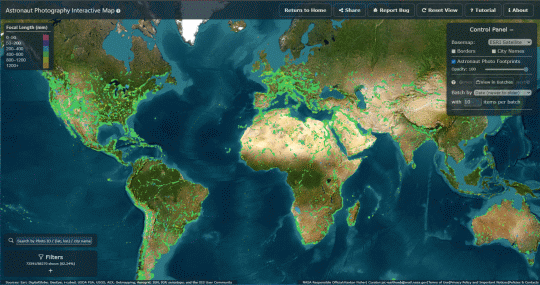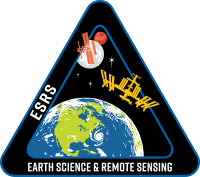ISS026-E-15208
| NASA Photo ID | ISS026-E-15208 |
| Focal Length | 800mm |
| Date taken | 2011.01.06 |
| Time taken | 06:57:05 GMT |
Resolutions offered for this image:
1000 x 658 pixels 540 x 355 pixels 720 x 480 pixels 4288 x 2929 pixels 640 x 437 pixels
1000 x 658 pixels 540 x 355 pixels 720 x 480 pixels 4288 x 2929 pixels 640 x 437 pixels
Cloud masks available for this image:
Country or Geographic Name: | CHINA |
Features: | RONGBUK GLACIER, MOUNT CHANGTSE, MOUNT KHUMBUTSE |
| Features Found Using Machine Learning: | |
Cloud Cover Percentage: | 10 (1-10)% |
Sun Elevation Angle: | 38° |
Sun Azimuth: | 191° |
Camera: | Nikon D2Xs Electronic Still Camera |
Focal Length: | 800mm |
Camera Tilt: | 16 degrees |
Format: | 4288E: 4288 x 2848 pixel CMOS sensor, RGBG imager color filter |
Film Exposure: | |
| Additional Information | |
| Width | Height | Annotated | Cropped | Purpose | Links |
|---|---|---|---|---|---|
| 1000 pixels | 658 pixels | No | Yes | Earth From Space collection | Download Image |
| 540 pixels | 355 pixels | Yes | Yes | Earth From Space collection | Download Image |
| 720 pixels | 480 pixels | Yes | Yes | NASA's Earth Observatory web site | Download Image |
| 4288 pixels | 2929 pixels | No | No | Download Image | |
| 640 pixels | 437 pixels | No | No | Download Image |
Download Packaged File
Download a Google Earth KML for this Image
View photo footprint information
Download a GeoTIFF for this photo
Image Caption: North Col of Mount Everest
This astronaut photograph highlights the northern approach to Mount Everest from Tibet (China). Known as the northeast ridge route, climbers travel along the East Rongbuk Glacier (image lower left) to camp at the base of Changtse mountain. From this point at approximately 6,100 meters (20,000 feet) above sea level (asl), climbers ascend the North Col--a sharp-edged pass carved by glaciers, at image center--to reach a series of progressively higher camps along the North Face of Everest. Climbers make their final push to the summit (just off the top edge of the image) from Camp VI at 8,230 meters (27,000 feet) altitude.
Located within the Himalaya mountain chain, Everest (or Sagarmatha in Nepali) is the Earth's highest mountain, with its summit at 8,848 meters (29,029 feet) above sea level. Khumbutse mountain, visible at the lower right, has a summit elevation of 6,640 meters (21,785 feet) asl. While the near-nadir viewing angle--almost looking straight down from the International Space Station--tends to flatten the topography, astronauts have also taken images that highlight the rugged nature of the area.
Climbing to the summit of Everest requires much advance planning, conditioning, and situational awareness on the part of mountaineers to avoid potentially fatal consequences. As of 2010, there have been over 200 reported deaths. The numerous expeditions to reach the summit of Everest have produced significant trash and spent oxygen bottles at the various camps, leading the Nepalese government to impose rules requiring climbers to return with their gear and rubbish. Several "cleanup" expeditions have removed tons of material, including the remains of several climbers.
This astronaut photograph highlights the northern approach to Mount Everest from Tibet (China). Known as the northeast ridge route, climbers travel along the East Rongbuk Glacier (image lower left) to camp at the base of Changtse mountain. From this point at approximately 6,100 meters (20,000 feet) above sea level (asl), climbers ascend the North Col--a sharp-edged pass carved by glaciers, at image center--to reach a series of progressively higher camps along the North Face of Everest. Climbers make their final push to the summit (just off the top edge of the image) from Camp VI at 8,230 meters (27,000 feet) altitude.
Located within the Himalaya mountain chain, Everest (or Sagarmatha in Nepali) is the Earth's highest mountain, with its summit at 8,848 meters (29,029 feet) above sea level. Khumbutse mountain, visible at the lower right, has a summit elevation of 6,640 meters (21,785 feet) asl. While the near-nadir viewing angle--almost looking straight down from the International Space Station--tends to flatten the topography, astronauts have also taken images that highlight the rugged nature of the area.
Climbing to the summit of Everest requires much advance planning, conditioning, and situational awareness on the part of mountaineers to avoid potentially fatal consequences. As of 2010, there have been over 200 reported deaths. The numerous expeditions to reach the summit of Everest have produced significant trash and spent oxygen bottles at the various camps, leading the Nepalese government to impose rules requiring climbers to return with their gear and rubbish. Several "cleanup" expeditions have removed tons of material, including the remains of several climbers.


